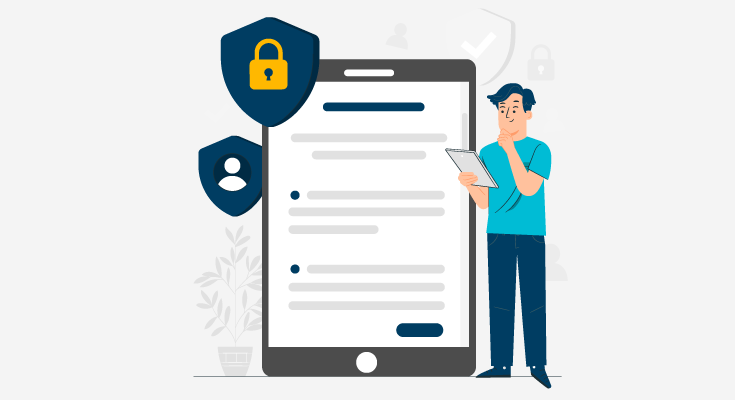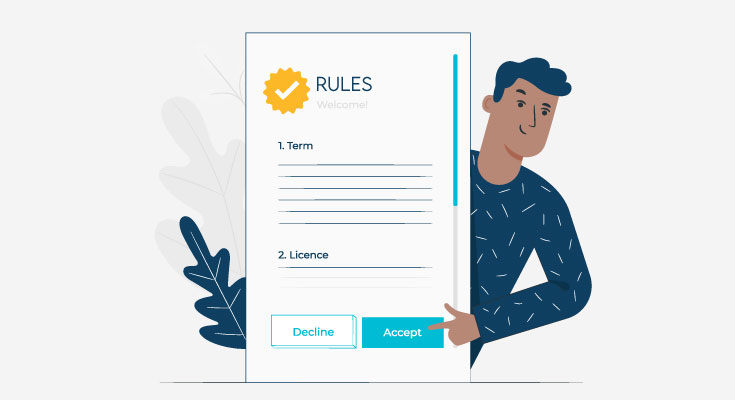The rise of digital banking services, ACH payment, and third-party payment providers has changed the face of banking. The needs of customers are an ever-changing concept and to facilitate those needs, the financial industry is trying to offer faster and more secure transactions. To enjoy the benefits that come along with digital banking transactions, banks need to provide better security.
Customers from all over the globe can sign up for digital banking services with strong customer Identity verification solutions. Online documents can help banks and other financial institutions verify customer identities seamlessly and offer security to digital banking procedures. The use of documents to verify customer identities before opening a new account is a very old process. Now that banking has shifted online, so has the document verification process. Verification of online documents is really important for secure digital banking operations. By verifying driver’s licenses, proof of address, utility bills, and proof of income, financial institutions can verify customer identities and reduce red flags.
The FinTech Industry is full of solutions that can offer online document verification. AI-driven document verification solutions aren’t 100% reliable. To bridge the gap between security and transparency, DIRO’s online document verification solution helps organizations achieve that.
DIRO is an award-winning online document verification technology that captures information directly from the original web source to verify documents. The document it verifies holds a stronger proof of authenticity as opposed to sharing and verifying original copies in person or uploading copies online. Using DIRO’s technology can help you access all banks, utility companies, and government databases with automated user consent and a strong Multi-factor authentication impersonation check.
Some of the major features of DIRO’s online document solution are:
- Can verify online documents globally.
- 24/7 live coverage for online document verification.
- Instant document verification at any time.
- 5000+ document types to verify from.
- Verified documents can be tamper-proof as documents are provided a Digital fingerprint and uploaded on the blockchain.
Different Types of Document Verification Methods
The concept of verifying documents for opening a new bank account or signing up for new services is relatively new. There are two types of methods for verifying documents. In the past, banks used to rely on human resources for verifying documents which were slow, tedious, and error-prone.
Here’s a breakdown of types of document verification methods.
1. Manual Document Verification
Verifying customer documents like government-issued identity documents, address proof, income statements, insurance documents, etc. for account opening and signing up for other banking services. Manual document verification relies on human resources to check for details in the documents. Humans can be easily tricked with fake documents created using image doctoring software.
A business can be easily tricked and harmed by fraudsters using sophisticated technological methods. For humans, there is no way to distinguish between original documents and doctored documents. Manual document verification methods are slow, insecure, and inefficient.
- Manual document verification methods are easy to trick.
- Take up a lot of time and resources for limited results.
- A slow process that leads to slow customer onboarding.
- Hard to fulfill KYB & KYC compliance with manual methods.
2. Automatic Document Verification
To bridge all the gaps in manual document verification, automatic or online document verification solutions came into existence. With the right kind of technology banks, financial institutions, and FinTechs can easily verify documents for new account opening and signing up for new services.
DIRO’s online document verification technology makes it easy for you to verify online documents like driver’s licenses, proof of address, utility bills, student documents, etc. It provides secure, reliable, instant document verification with 100% proof of authentication. The proof of authentication is a court-admissible document with forensic data.
- Instant document verification for improved customer experience and customer onboarding.
- Unlike manual verification, you can verify any type of online document globally.
- 100% proof of authentication.
- Captures information directly from the original web source to distinguish between original and fake documents.
- Provides a digital fingerprint for authentic documents and uploads documents on the blockchain.
What Makes DIRO Different From Competitors?
There are a variety of document verification solutions available in the market, but most of them rely on machine learning and artificial intelligence (AI). Online document verification solutions that are driven by AI aren’t as reliable as claimed. AI-driven document verification solutions can be tricked by fraudsters with a constant feed of false data. AI-based online document verification solutions verify documents by verifying document data. Fraudsters can feed an array of false data that can help to trick solutions into thinking that it’s the real document.
DIRO technology, on the other hand, verifies documents by capturing information directly from the web source. Here’s a comparison of DIRO’s online document verification solution and other verification solutions.
| DIRO | Brand A | Brand B | Brand C |
| Instant document verification | 30-50 seconds for document verification | Up to 1 minute for document verification | Up to 1 minute for document verification |
| 5000+ types of documents for verification | 3000+ types of documents for verification | 3000+ types of documents for verification | 4500 types of documents for verification |
| 100% proof of authentication | No proof of authentication | No proof of authentication | No proof of authentication |
| Verified court-admissible documents | No court admissible documents | No court admissible documents | No court admissible documents |
| Doesn’t require photos or screenshots for verifying documents. | Requires images for document verification. | Requires images for document verification. | Requires images for document verification. |
Conclusion: How DIRO’s Solution is Unique from Others?
Banks, financial institutions, and governments can’t trust photos or screenshots of customer documents as they can be easily doctored using technology. This is the reason why organizations need online document verification solutions that can verify documents instantly, improve the customer onboarding process, and reduce fraud.
DIRO allows customers to provide an original document from any online source like banks, government databases, or private databases for ID verification. DIRO’s innovative solution can be used across banking and other industries.










